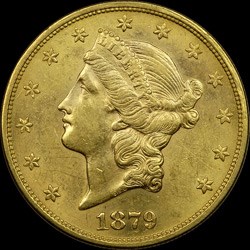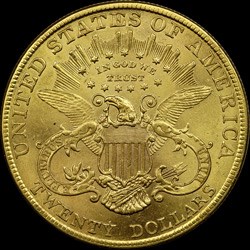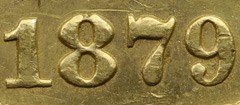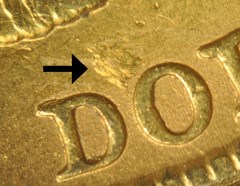Counterfeit Detection: 1879 Double Eagle
Posted on 10/14/2014
One of the most important methods of counterfeit detection is the identification of depressions, tool marks, or other issues that repeat in the exact same places on multiple coins. It is simply not possible for two coins to circulate and subsequently exhibit depressions (the terms used for “marks” in the context of counterfeits) in identical locations. These repeating marks can be extremely useful to determine authenticity and examples on other coin types continue to be found by NGC graders and other numismatists.
Many repeating depressions used to identify counterfeits have been known for decades, but forgeries that feature these diagnostics continue to be seen in the marketplace today. One example is this spurious 1879 Double Eagle, which was recently submitted to NGC for authentication and grading.
Several decades ago numismatists identified a number of 1879 Double Eagles that all had depressions and flaws in the exact same locations. The issues included a depressed diagonal line through the E in LIBERTY with damage below the letter, a notch at the top loop of the 8 in the date, a depression between the D in UNITED and the S in STATES, and a large area of tooling above the DO in DOLLARS. Some of these issues were on a genuine coin that was copied to make counterfeit dies while other issues, such as the tool marks, were added to the die by the forger.
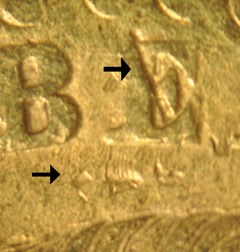 |
|
| Counterfeit 1879 Double Eagle Close Up A depressed diagonal line through the E in LIBERTY with damage below Click images to enlarge. |
|
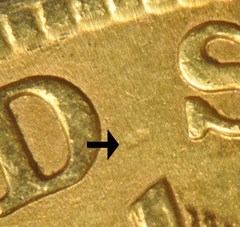 |
|
| Counterfeit 1879 Double Eagle Close Up Depression between the D in UNITED and the S in STATES Click images to enlarge. |
|
This is a fairly deceptive counterfeit so the presence of numerous repeating issues makes detection significantly easier. Collectors can find a wealth of information about known repeating diagnostics on the NGC website as well as in articles published in the American Numismatic Association’s The Numismatist. A number of the articles from The Numismatist published in the late 1970s and early 1980s identified the repeating depressions commonly seen at the time and many of these same fakes are still routinely found in NGC submissions decades later.
Interested in reading more articles on Counterfeit Detection? Click here.
Stay Informed
Want news like this delivered to your inbox once a month? Subscribe to the free NGC eNewsletter today!
